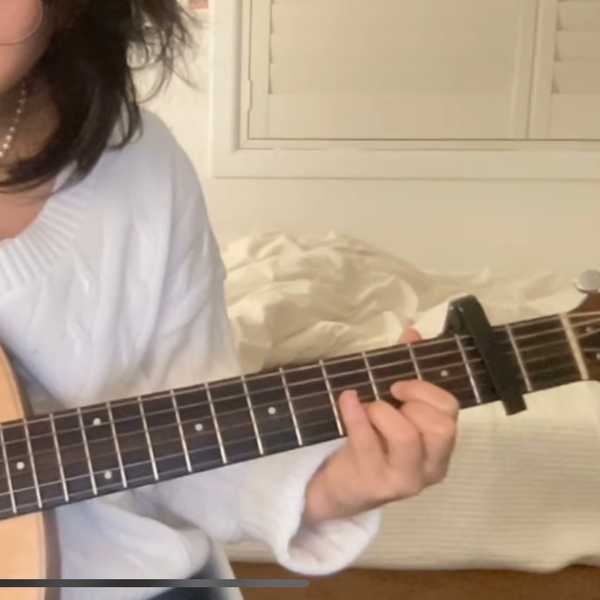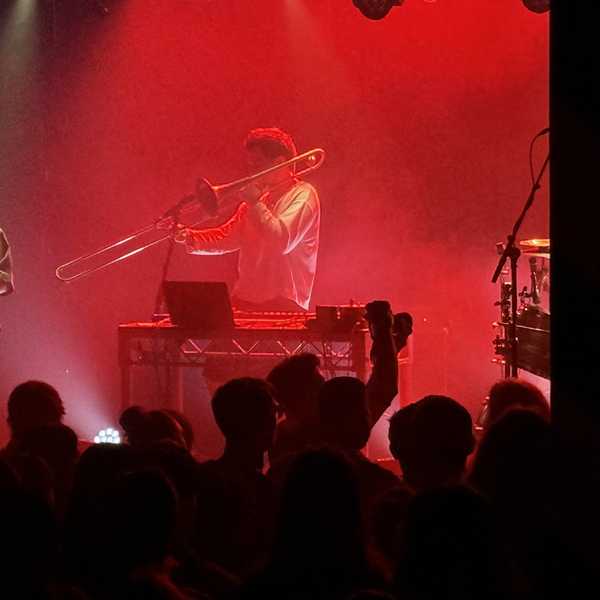
On May 20th, 2018 the Midnight Special departed from Rangers Road in Neutral Bay on the North shore of Sydney just about 10 km north of the studio here in Paddington. The now defunct Albert’s music studios that used to stand there have now been demolished in the never ending eruption of luxury units. [1] Or maybe as Nietzsche put it, “A person must have the power and from time to time use it to break a past and to dissolve it, in order to be able to live… That past is worthy of condemnation.”
The Sydney recording home of AC/DC is no longer. But, back in 1975 Angus Young’s crunchy red Gibson SG and Bon Scott’s high pitch yelling filled the Albert’s recording studio. As Angus and Malcolm’s older brother George, who co-produced numerous AC/DC albums put it, “All of a sudden the kid brothers were still the kid brothers…but my God, they knew how to play.”[2] And thus “High Voltage” Rock and Roll was born in 1975.
I said “High Voltage” direct current. HVDC is one method of providing power as opposed to alternating current systems you might be familiar with and utilizes frequencies around 50 to 60 Hertz (A hertz is a repetition/cycle per second). Where a cycle is the distance between amplitude peaks of an electromagnetic waveform. And this introduces the train line today… We will be following the electromagnetic spectrum from these low frequencies of high voltage rock and roll all the way to the exahertz range of gamma rays. (In case you are unaware an exahertz is 1000000000000000000 Hertz or a Gigahertz squared.)
So, “What’s the frequency, Kennneth?” R.E.M. lead singer Michael Stipe asked this question on their 1994 album Monster, but so did William Tager in 1986 while walking down Park Avenue… On October 4th, 1986 William Tager attacked renowned CBS Evening News anchor Dan Rather. During this incident, Tager, whom was unidentified at the time, kept prying to determine “Kenneth, what is the frequency?” as he believed that TV networks like CBS and NBC were radiating malicious signals into his brain. [3] Therefore if he could discern what the frequency was he could attempt to shield himself from that frequency. How he was going to do this, I am not quite sure. What I am sure of is that we are radiating at 89.7 Megahertz and your radio antenna is what we are actually after. If a few of the waves pass through your brain please don’t attack me on Oxford St… While Tager and Stipe want to hone in on one frequency and one frequency only, Bob Dylan is a little more lenient in his choice of electromagnetic wavelength…
On “Lay Lady Lay” Dylan responds, “Whatever colors you have in your mind / I’ll show them to you and you’ll see them shine.” While Dylan spent much of this time period a few hours north of park Avenue in Woodstock, the Midnight Special rides into Nashville on a cool Valentine’s day morning to hear in to the unusual crooner in Columbia Studio A. [4] You have to hope that his wife, Sara Dylan, was in the studio this Valentine’s Day to hear her husband croon, “Lay, lady, lay, lay across my big brass bed / Stay, lady, stay, stay while the night is still ahead.” What a Valentine’s Day present! Dylan probably would not have survived Tager’s questioning and attack though. As Tager may have started to freak out even more hearing that there may be more than one frequency in his mind and that Dylan would show them all to him. On second thought maybe this would have been the lyric to finally put Tager at ease… Let’s forget about Tager for now and give Kenneth an actual answer about the frequencies of the rainbow…
Red sits directly at the long end of the visible spectrum, or rainbow, or range of humanly perceptible frequencies or colors. Its wavelength measures in at roughly 630 to 740 nanometers and re everything from little red Corvettes to strawberries to sunsets to the Communist flag. One place the color red has taken stronghold in strangely enough is horse racing. Now shadowed by Man o’ War and Secretariat, Phar Lap used to be the most well known Big Red in the sport. But, here in Australia you might know him as “Australia’s wonder horse.” So let’s direct the Midnight Special directly to the Flemington Racecourse in 1930 for the race that stops a nation and a train. The mighty 17 hands tall Phar Lap is coming off of a third place finish as the favourite at the cup last year and is being placed at eleven to eight, the shortest priced odds favorite in history. But on the race day, November 4, “The question was not which horse would win, but “Can Phar Lap carry the weight?” as he was carrying a ridiculous handicap of 63 kilograms. [5] If this was not enough of a handicap, the horse with a heart twice the normal size was the victim of an attempted murder three days prior to the race on the morning of November 1, when a group of criminals shot at him after his morning track workout. [6] I don’t think it is hard to imagine how a song could be written about such an Australian Hero. This is just what one of Australia’s greatest songwriters, Russell Morris, did for his 2012 album, Sharkmouth, which included songs about other such characters as Les Darcy. But as Big Red could not survive the constant pressure and on the morning of April 5, 1932 Phar Lap’s red blood was too much as he hemorrhaged to death. [7] Whether this was a poisoning attempt or strange health condition we still do not know…
But the orange ball of heat shone above as Big Red became no more…
I try to emulate a certain performer while I describe the songs I play on air and I would like to pay homage to him by using his words to explain the two songs played for the vibrant orange color, which is perceived for light with peak wavelengths between 585 and 620 nanometers. It takes form in our world through such methods as mixing yellow and red and also the photosynthetic pigment, carotene. It was also used by Don DeLillo to describe the sun as an orange ball, which John Darnielle seemed to find unsatisfactory…
“I’ll tell you why I wrote this song [“Orange Ball of Love”]. It was to make fun of Don DeLillo. ‘Cause the sun was an ‘orange ball’ in about, like, five different instances in the space of fifty pages. I really like his writing, but I thought that was lazy, and so being an arrogant college student, I thought ‘Ah, I’ll really get him: I’ll write some song about it and my obscure little indie rock band will play it, and then we’ll see who’s funny’. Thus was the Orange Ball series born.” [8,9]
Orange Ball of Love – “I had this idea, I thought, ah, wouldn’t it be funny if there was, like, somebody who was like, you know, if you, like, had a relationship where, you know, you were in the relationship and you were starting to feel a little suspicious that something was going on, as you do sometimes, you know, you say, oh man, there’s gotta be something going on with this person that they’re not sharing with me, you know. And then you think about that too much. Right? It doesn’t mean you’re obsessed, no, you’re not that kind of person, but you do spend maybe five minutes too many on, ‘Wow, what are they up to that I don’t know?’ Right? And like, right at that five-minute mark, you thought too long about that question. And then it’s only about a sixty-second trip to like, ‘Oh, geez, maybe they’re recording our conversations? Maybe there’s a camera behind this goddamn mirror. Maybe there’s shit of mine on some Web site that I don’t even know about. Damn, I better look good when I’m shaving, that kind of thing.’ Maybe you think about that kind of thing. I know you do. You, you can’t lie to me.” [10,11]
Orange Ball of Hate – “This is a song – takes place in California – it was on the first CD – it’s about that moment in which you know it’s not going to get any better, but you want to prove to somebody exactly how strong you are.” [12,13]
The sun is perhaps sometimes an orange ball of hate, but “if the trees were yellow that would cure my heartbreak”, Kevin Abstract sings on his song “Yellow”, the sixth track on his second solo album American Boyfriend: A Suburban Love Story. Abstract is the main creative force and director behind the new breakout hip hop boyband BROCKHAMPTON. But in his own world he has created the character helmet boy, who is the hero Kevin dreamed to be in high school and maybe has become. “Helmet boy is the awkward suburban hero. The awkward suburban hero is someone who deals with secrecy, privacy, vulnerability, and trying to be yourself in a place where people don’t want you to be yourself. And just existing is enough to make you a hero.” [14] But the yellow he hopes for does not just exist in the trees, it is also an image that he wants himself to exude, “I wanna be yellow, It’s bright like yellow, This song’s so yellow, It’s bright like yellow.” In the midst of his awkward war against society, his own sexuality, his parents view of sexuality, and the impossibility to be who he wanted to be at times Kevin just wants to be carefree and shining yellow. As Kevin looks toward a hopefully yellow future, Lianne La Havas looks back into her past for the shine of gold and the history of green.
While Kevin’s desire for the trees to be yellow only comes for some of us during autumn, the desire for green trees would be slightly more rewarding. Green, which we observe when we see light with a peak wavelength between 495 and 570 nanometers, is not so far away from yellow, which we see when light with a peak wavelength of 570 and 590 nanometers shines on our eyes. And La Havas’ reflection on her heritage is not so far from Abstract’s carefree response to all of the sometimes crippling reflection he endures while surviving as the awkward, gay, black suburban hero. She decided to look inwards as well and took a trip to Jamaica with her mother to discover the character in her past that she had been struggling to write into creation. [15] This character, half Greek and half Jamaican, comes alive in the song, “Green & Gold”, where the character is no longer just a person, but a “feeling of who you are and where you come from” and an answer to the question she poses in the first verse, “Thinking where am I gonna be If I’m ever twenty-three?” But sometimes colors in songs aren’t as symbolic as you think sometimes you just have a really good ass pair of “Blue Suede Shoes.”
And now the Midnight Special rolls back into the state of Tennessee, but this time in the musical brother city of Nashville, Memphis, Tennessee. It is the year 1955 and a young Carl Perkins is hanging out with his touring mates, two people you might know, Elvis Presley and Johnny Cash. Cash reminisced about a character he had met while serving in the US Air Force, stating that the man used to refer to his dingy and black military boots as his “blue suede shoes.” Perkins rebuked Cash’s request for a song about the shoes since he didn’t know nothing about shoes. A mere few months later Perkins witnessed a boy yelling at someone to get off his blue suede shoes and began to question whether Johnny was actually onto something. In December the line, “Wellt it’s one for the money… two for the show…. three to get ready…. No go, cat, go! But don’t you step on my blue suede shoes” became immortalized. [16] Man, you could do anything to Carlt hat you wanted but if you stepped on his blue suede shoes you were a dead man…. Ironically enough, as Perkins highlighted earlier, he was not a man to wear blue suede shoes, “I’m not a society man, I don’t go to the country clubs, I don’t go to Nashville and hang out. I never fit in with that. My friends at home work at the service station.” So when his friends grew into stardom and even recorded his songs, he remained in the shadow, playing honky tonks, writing his own songs, and loving his wife. “People say, ‘What happened to you, Carl? All of them went on to superstardom. Where’d you go?’ I say, “I went home.’ And that’s a good place to be.” [17] Because no one can step on your shoes when you’re at home.
While the blue suede shoes of Carl Perkins time may no longer be in style, the Air Jordan’s with the blue suede in ’em is all Vince Staples wanted. But this isn’t the only color Staples uses in the song, following this desire with a more brutal and stark desire to outlive the red roses, living at the other end of the visible spectrum, placed on young graves of his fellow African Americans who grew up in the same neighborhoods. The colors could not be more different and the symbols of each could not be further either. When all you see is the red of roses and death around you the small material shine of another day alive to possibly get that new pair of powder blue Jordan’s must be heaven. Vince keeps going back and forth between red and blue, casual sex and death row, riches and selling drugs on the block, “Death row, till they put you in the Pikachu to fry , That’s life, three strikes, that’s life, three hoes, half dyke, this can be a long night, long road to riches, bravos from bitches, coulda’ been a felon selling nickels off of Linden.” Perhaps these are the yellow trees that Kevin Abstracted dreamed for as well in the momentary blue suede and riches that distract from the reality that had you not been able to buy these shoes you’d probably be in prison or under the red roses.
As we reach the end of the rainbow sometimes all you can hope for is to see someone laughing in the purple rain. Purple, unfortunately is actually a composite color of red and blue and the similiar tone of violet is an actual color on the spectrum with a peak wavelength between 380-450 nanometers. The color or magic and royalty fit Prince well. And as he described the song as only he could, “When there’s blood in the sky – red and blue = purple. purple rain pertains to the end of the world and being with the one you love and letting your faith/god guide you through the purple rain.” [18] Prince knew his composite colors well. and his drummer caught on as well when he discussed Prince’s ability to mix sounds like a painter mixes colors, “He was always kind of a solo artist, but the fact that the Revolution were able to give him the colours on a palette made me proud.” [19]
When the frequency becomes a bit higher than that of violet our eyes become useless objects. Such waves of electromagnetic radiation as ultraviolet, X-Rays, and gamma rays are no longer the waves our everyday world but the waves of scientific discovery and innovation. They exist in the harmful world of cancer yet also in the helpful world of medical imaging. The Midnight Special will chug along past the first two and roll into the final stop on the electromagnetic spectrum line, gamma ray station. These waves of light have a wavelength of roughly 1 picometer or .001 nanometers corresponding to a frequency of about 300 exahertz or 300 square gigahertz or 300 *10^18 hertz. Anyway you put it it’s a lot of hertz… These waves are not as friendly as the light we interact with every day as they are the radiation emerging from the radioactive decay of atomic nuclei.
Beck utilized this biologically hazardous imagery when recording his album Modern Guilt in 2008. In one of my favourite music methodologies Beck injects these dangerous symbols into a lyrically apocalyptic song with a musically extremely upbeat and light feel. What better song to dance along to then one where something, “hit me like a gamma ray, standing in a hurricane, and I’m pulling out thorns, smokestack lightning.” Maybe Tager and Stipe and Kenneth can finally rest assured that the frequency trying to kill them was 300 exahertz…
Check out the whole show again HERE or
Find the songs from this show and the considered but not chosen songs about different electromagnetic waves in this Spotify playlist!
Share "The Midnight Special – High Voltage to Gamma Ray"
Copy








